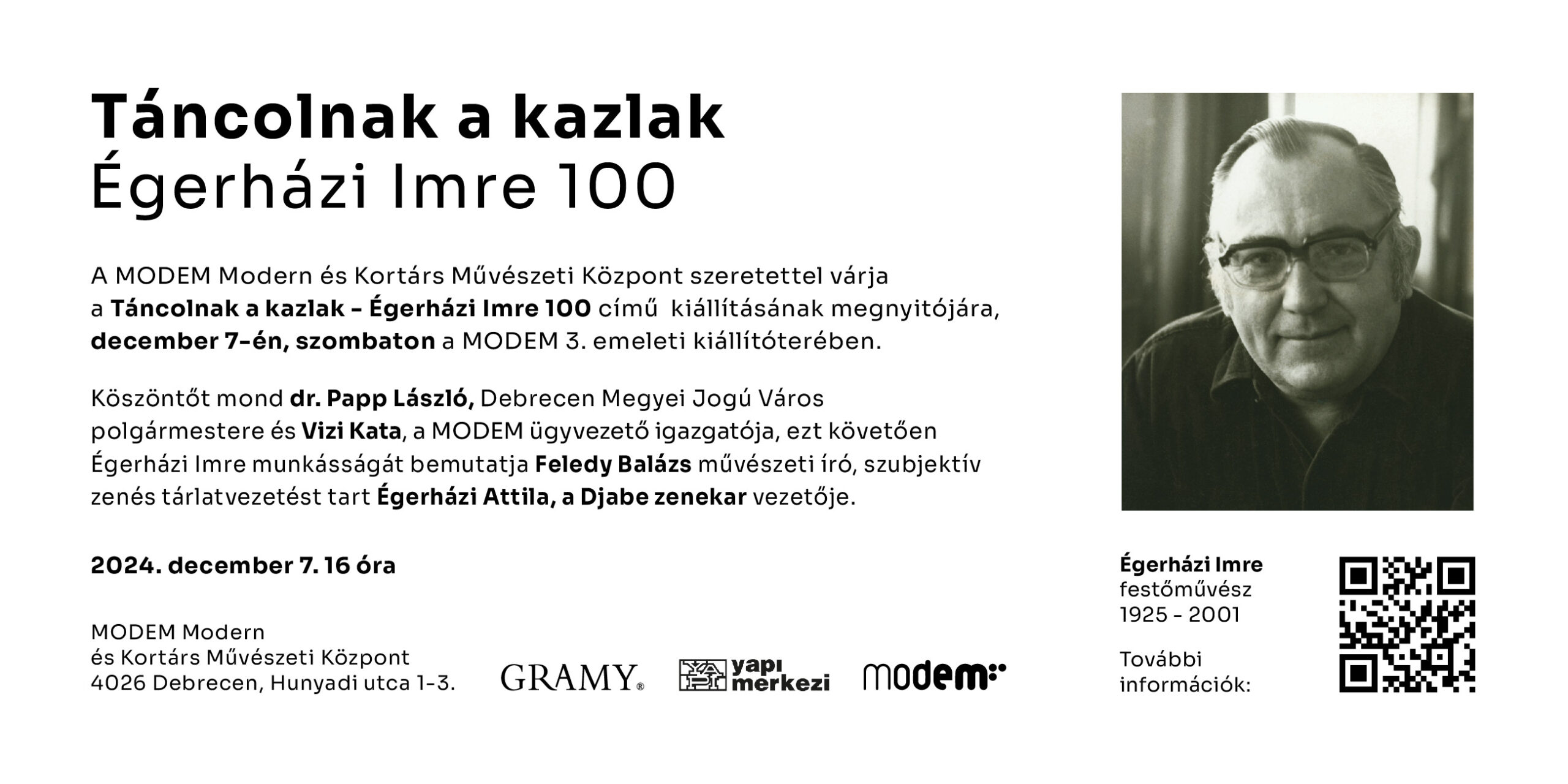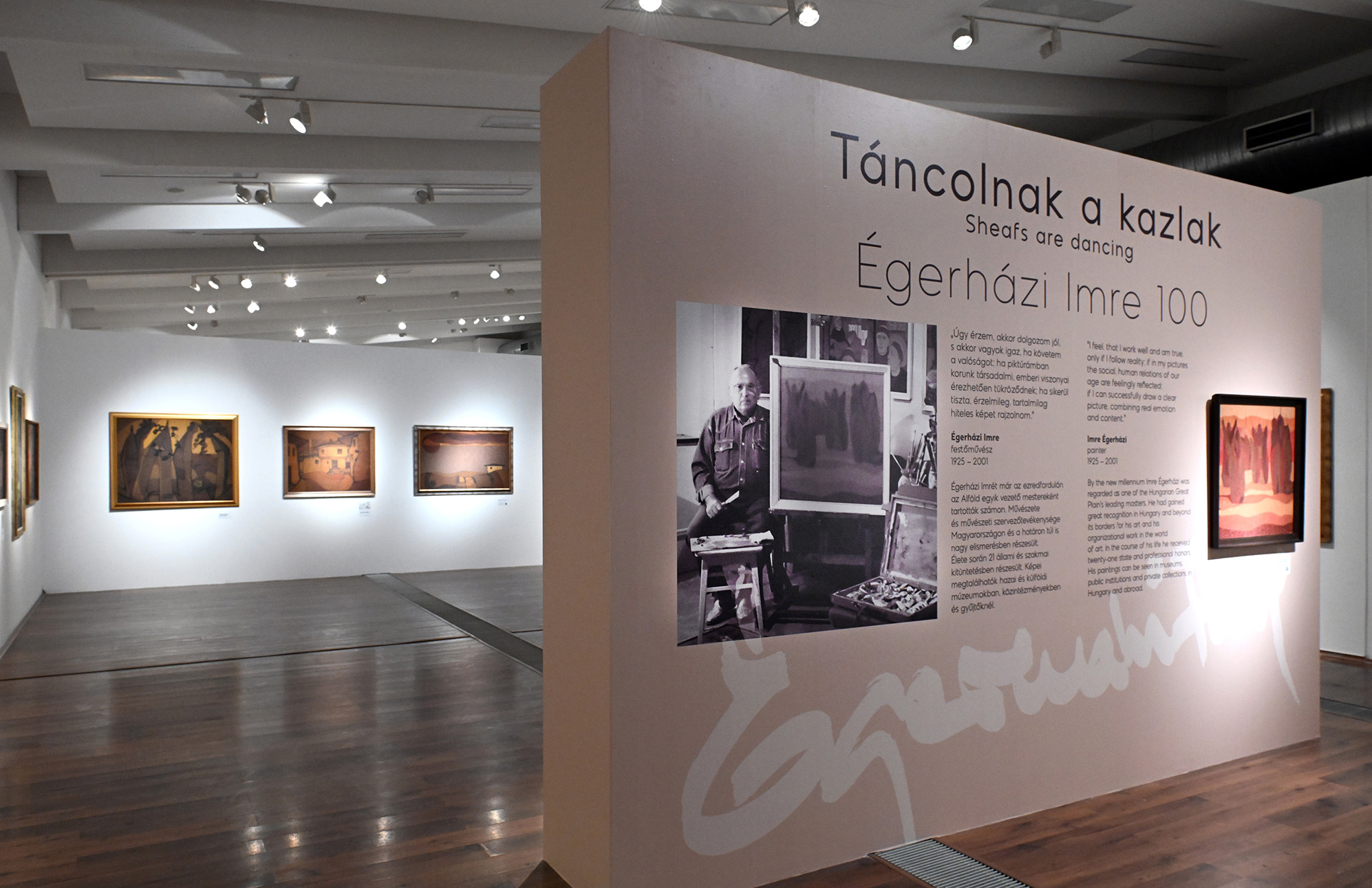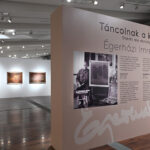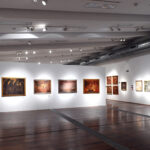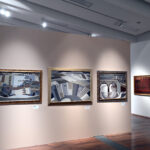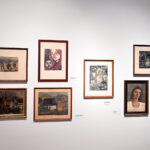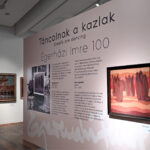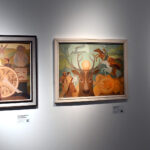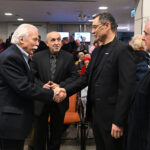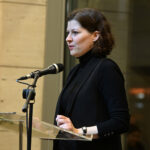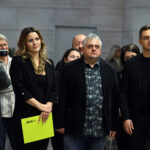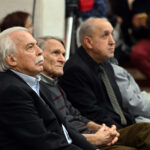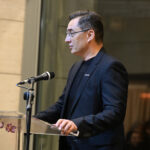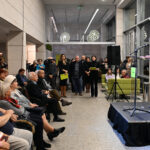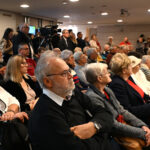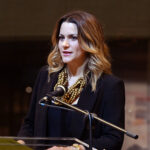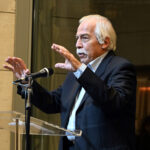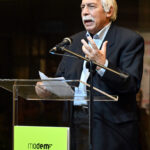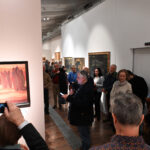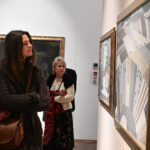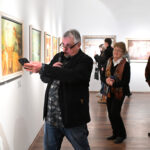We opened yesterday. The sheaves are dancing again in Debrecen. I’d like to hark back to this unforgettable event with András Máthé’s photo series. We had just two and a half months to put this exhibition together on account of a coincidence of timing. This is a very short amount of time, given that we were required to provide an accurate introduction to my father’s extremely prolific and high-quality life’s work through approximately 110 pictures. Luckily, arts writer Balázs Feledy agreed to undertake the job of curator; we have worked together with him on various Égerházi exhibitions for more than 20 years.
In the past 23 years, we have put together exhibitions, compiled brochures, collected, processed, systematised and archived the life’s work. We have also developed the egerhaziimre.hu website for 22 years. This helped us to skip various phases of work which enabled us to complete the job within this short time frame. But for this we also needed MODEM’s excellent team: Director Kata Vizi’s support, and the swift and generous contributions of her highly professional and well-prepared colleagues. I would also like to thank them by name: Zsanna Nagy, Lili Tolnay, Gyula Deczki, Dr. Szabolcs Süli-Zakar, Bence I. Marczin, Sándor Kovács, Tamás Bihari, Levente Vigh, Dr Petra Baluja, Petra Bankó and Dr Nelli Lukács. I was in direct contact with them, but naturally, I’m grateful to every staff member of MODEM. I felt at home and safe.
I would also like to thank my own colleagues for their work. Zoltán Kiss, Mrs Mihalik, Szilvia Németh, Mrs Zombori Tímea Drnecz and László Bese. And of course my brother, Péter Égerházi. I was filled with excitement already upon my arrival in the morning. Entering the exhibition hall, it was an uplifting feeling to see my father’s paintings in this arrangement, and this many gathered together. I know each and every painting down to the last detail, many of them reside in my home. But in this sanctuary of art, they tell us with evocative force that Imre Égerházi was a painter of the Great Plain to the highest world standards. The creator and the exhibition space found each other in MODEM.
Guests started arriving at around half past three in the afternoon. Family members, friends, former colleagues, fellow artists, admirers, people who love the arts. And they kept coming and coming. By a quarter to four, the entrance hall filled up, and so many went upstairs from where you can still see the stage. The official count upon entry into the exhibition hall was 243 persons, but I’m sure that in the crowd they couldn’t register everyone. And there were the organisers and the local team, too. So, we must have been surely around 300 there yesterday evening.
The guests were first welcomed by Mayor Dr László Papp. He made a great speech about my father. He praised his contribution as an artist, and drew attention to the importance and message of his life’s work, especially from the viewpoint of the City of Debrecen. I expected many things in connection with his speech, but I certainly didn’t expect to become overcome by emotion. But it’s not appropriate for an aging man to shed tears over a speech.
Director Kata Vizi told members of the audience how the centenary life’s work exhibition of Imre Égerházi fitted into MODEM’s series of exhibitions. We were pleased to hear about the results achieved by the institution in 2024, making us even prouder of the fact that the exhibition was housed by MODEM.
Balázs Feledy – introducing the exhibition – went back in time, lauded and placed Imre Égerházi and his artistic legacy into perspective. We would have been happy to listen to him for much longer, but we will have another opportunity during a guided tour of the exhibition starting at 6.00 p.m. on 10 January.
After the greetings and speeches, I was next. I had the honour of showing visitors around the exhibition. I chose an unusual method. Stopping at one painting or another in each section, I played extracts from the songs of the band Djabe inspired by Égerházi’s paintings, telling my audience how we wrote the individual numbers together with Tamás Barabás. How we painted the paintings further with sounds. It was thrilling to see the people listen and watch, how they, too, were inspired by this total work of art.
I finished the tour in the inside hall where we exhibited Imre Égerházi’s works painted on the basis of his near-death experience. It was an old desire of mine that this series comprised of 10 paintings should finally be on display together in one place. And now the moment came. But the tour itself didn’t finish here because on the projector we played Djabe’s animated clip Iceworld – it’s an animated film about the pieces of the painting series.
As he said, he saw scenes, rather than still pictures. We moved the still pictures, unfolding the scenes. It is well worth seeing this room even for those who are not particularly interested in the art of Imre Égerházi. It’s a miracle in itself as we can hear how Imre Égerházi relates what he saw in his own words.
The exhibition is open to visitors until 12 January. We sincerely hope that many more visitors will be inspired to come.
We also organised an Imre Égerházi memorial evening for 10 January.
From 6.00 p.m. Balázs Feledy will conduct a guided tour of the exhibition.
From 6.30 p.m. Attila Égerházi and Balázs Feledy will talk to painters Rudolf Velényi and Marcel Kelemen and former Mayor of Hajdúhadház László Béres, remembering Imre Égerházi.
From 7.30 p.m. Djabe will play a concert, focusing on the materials of the albums ‘Sheaves are Dancing” and ‘The Magic Stag.’
Attila Égerházi
